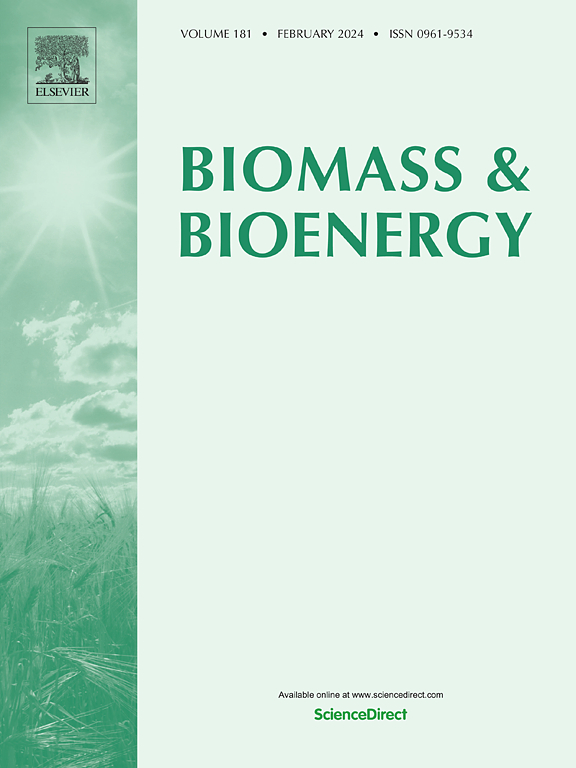纳米纤维素气凝胶的制备、功能改性及工业应用综述
IF 5.8
2区 生物学
Q1 AGRICULTURAL ENGINEERING
引用次数: 0
摘要
纳米纤维素具有表面改性简单、亲水性好、生物相容性好、官能团丰富等优点,是制备气凝胶的理想材料。第三代气凝胶是一种基于纳米纤维素的气凝胶,由于其独特的优点,包括高比表面积、三维结构、可生物降解、低密度、可再生和高孔隙率,已经引起了广泛的兴趣。本文研究了纳米纤维素气凝胶的制备及其功能改变。纳米纤维素气凝胶的制备包括四个基本步骤:溶解纳米纤维素,形成凝胶,替换湿凝胶中的溶剂,干燥湿气凝胶。纳米纤维素气凝胶的功能改性方法主要有机械功能化、热功能化、导电功能化、磁性功能化和抗菌功能化。功能化增强了纳米纤维素复合气凝胶的疏水性、吸附性能、力学性能和抗菌性能,同时赋予其导电性和电磁屏蔽能力。这扩大了其在环保方面的适用性和通用性。本文对纳米纤维素气凝胶在吸附、储能、传感、隔热、电磁屏蔽、生物医学等多个领域的研究进展进行了综述。最后,对纳米纤维素气凝胶的发展前景和面临的挑战进行了展望。本文章由计算机程序翻译,如有差异,请以英文原文为准。

Preparation, functional modification and industrial application of nanocellulose aerogels – A comprehensive review
Nanocellulose is a prospective material for preparing aerogels because of its straightforward surface modification, hydrophilicity, biocompatibility, and rich functional groups. The third-generation aerogel is an aerogel based on nanocellulose and has garnered widespread interest owing to its distinctive benefits, including a high specific surface area, three-dimensional structure, biodegradability, low density, renewability, and high porosity. This paper examines the fabrication and functional alteration of nanocellulose aerogels. The preparation of nanocellulose aerogel involves four primary steps: dissolving the nanocellulose, forming a gel, replacing the solvent in the wet gel, and drying the wet aerogel. The functional modification methods of nanocellulose aerogel mainly include mechanical functionalization, thermal functionalization, conductive functionalization, magnetic functionalization, and antibacterial functionalization. Functionalization enhances the nanocellulose composite aerogel's hydrophobicity, adsorption, mechanics, and antibacterial effects, while also endowing it with conductivity and electromagnetic shielding capabilities. This broadens its applicability and versatility in environmental protection. This paper offers an extensive overview of the progress achieved in nanocellulose aerogel research across various fields, such as adsorption, energy storage, sensing, thermal insulation, electromagnetic shielding, biomedicine, and more. In conclusion, the potential future developments and upcoming challenges facing nanocellulose aerogel are explored.
求助全文
通过发布文献求助,成功后即可免费获取论文全文。
去求助
来源期刊

Biomass & Bioenergy
工程技术-能源与燃料
CiteScore
11.50
自引率
3.30%
发文量
258
审稿时长
60 days
期刊介绍:
Biomass & Bioenergy is an international journal publishing original research papers and short communications, review articles and case studies on biological resources, chemical and biological processes, and biomass products for new renewable sources of energy and materials.
The scope of the journal extends to the environmental, management and economic aspects of biomass and bioenergy.
Key areas covered by the journal:
• Biomass: sources, energy crop production processes, genetic improvements, composition. Please note that research on these biomass subjects must be linked directly to bioenergy generation.
• Biological Residues: residues/rests from agricultural production, forestry and plantations (palm, sugar etc), processing industries, and municipal sources (MSW). Papers on the use of biomass residues through innovative processes/technological novelty and/or consideration of feedstock/system sustainability (or unsustainability) are welcomed. However waste treatment processes and pollution control or mitigation which are only tangentially related to bioenergy are not in the scope of the journal, as they are more suited to publications in the environmental arena. Papers that describe conventional waste streams (ie well described in existing literature) that do not empirically address ''new'' added value from the process are not suitable for submission to the journal.
• Bioenergy Processes: fermentations, thermochemical conversions, liquid and gaseous fuels, and petrochemical substitutes
• Bioenergy Utilization: direct combustion, gasification, electricity production, chemical processes, and by-product remediation
• Biomass and the Environment: carbon cycle, the net energy efficiency of bioenergy systems, assessment of sustainability, and biodiversity issues.
 求助内容:
求助内容: 应助结果提醒方式:
应助结果提醒方式:


